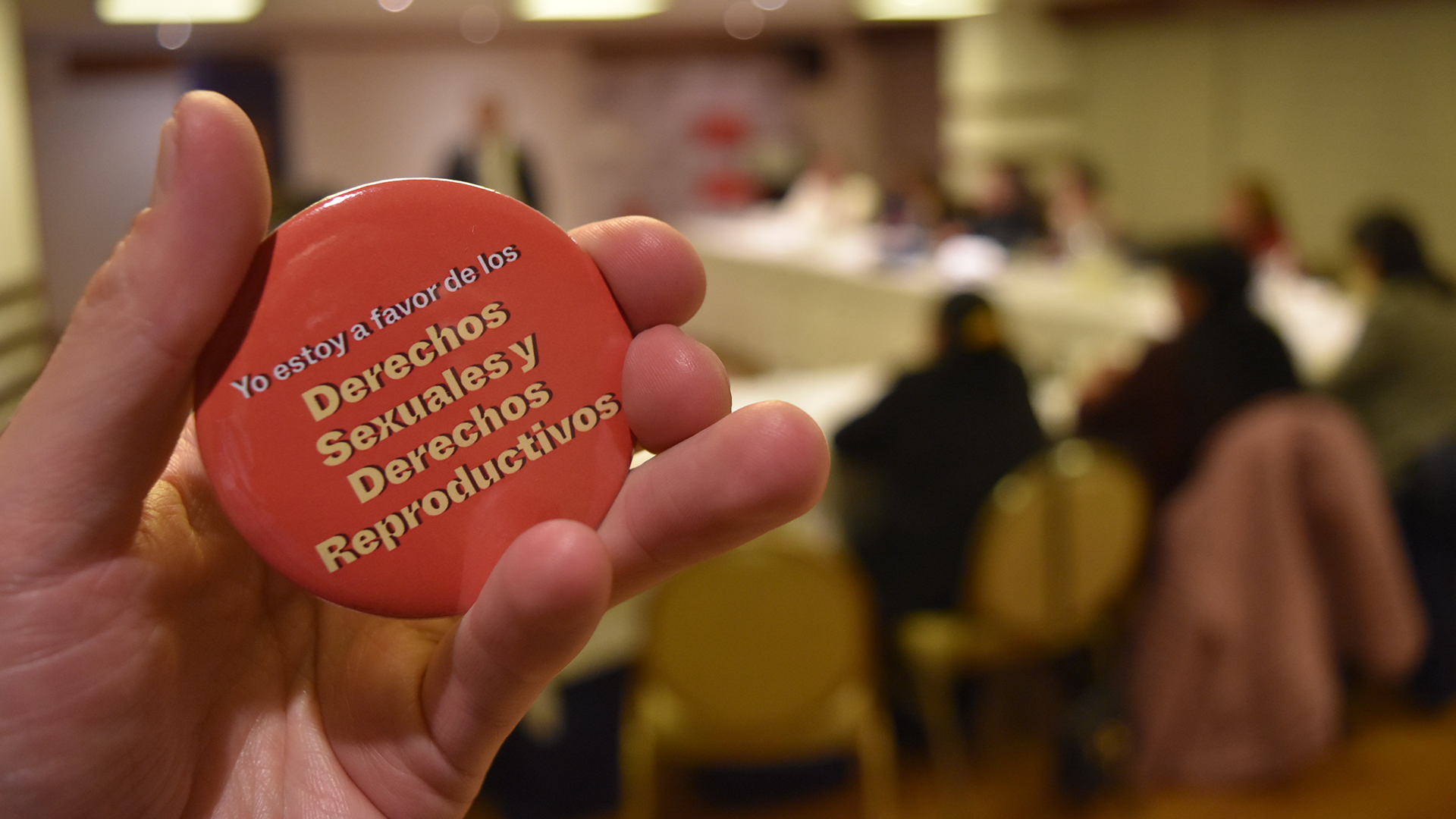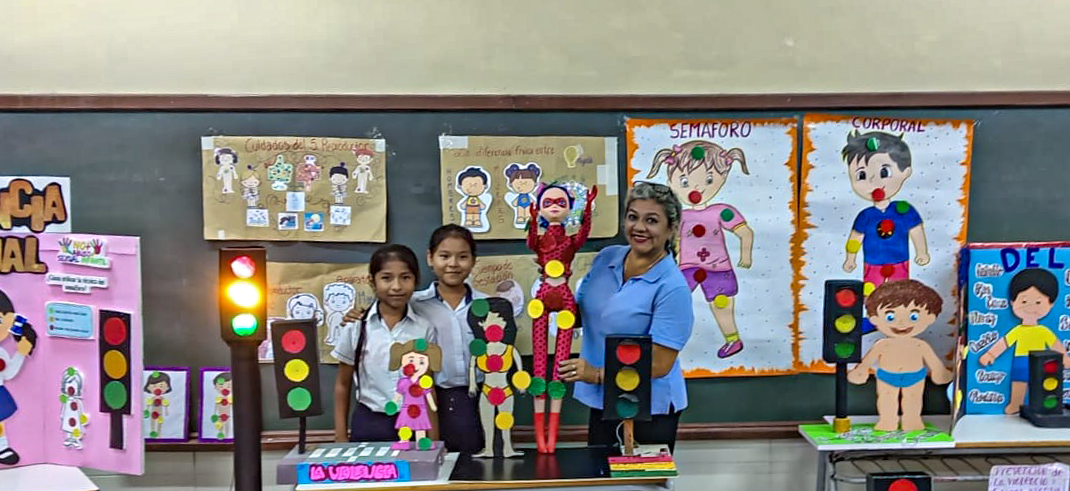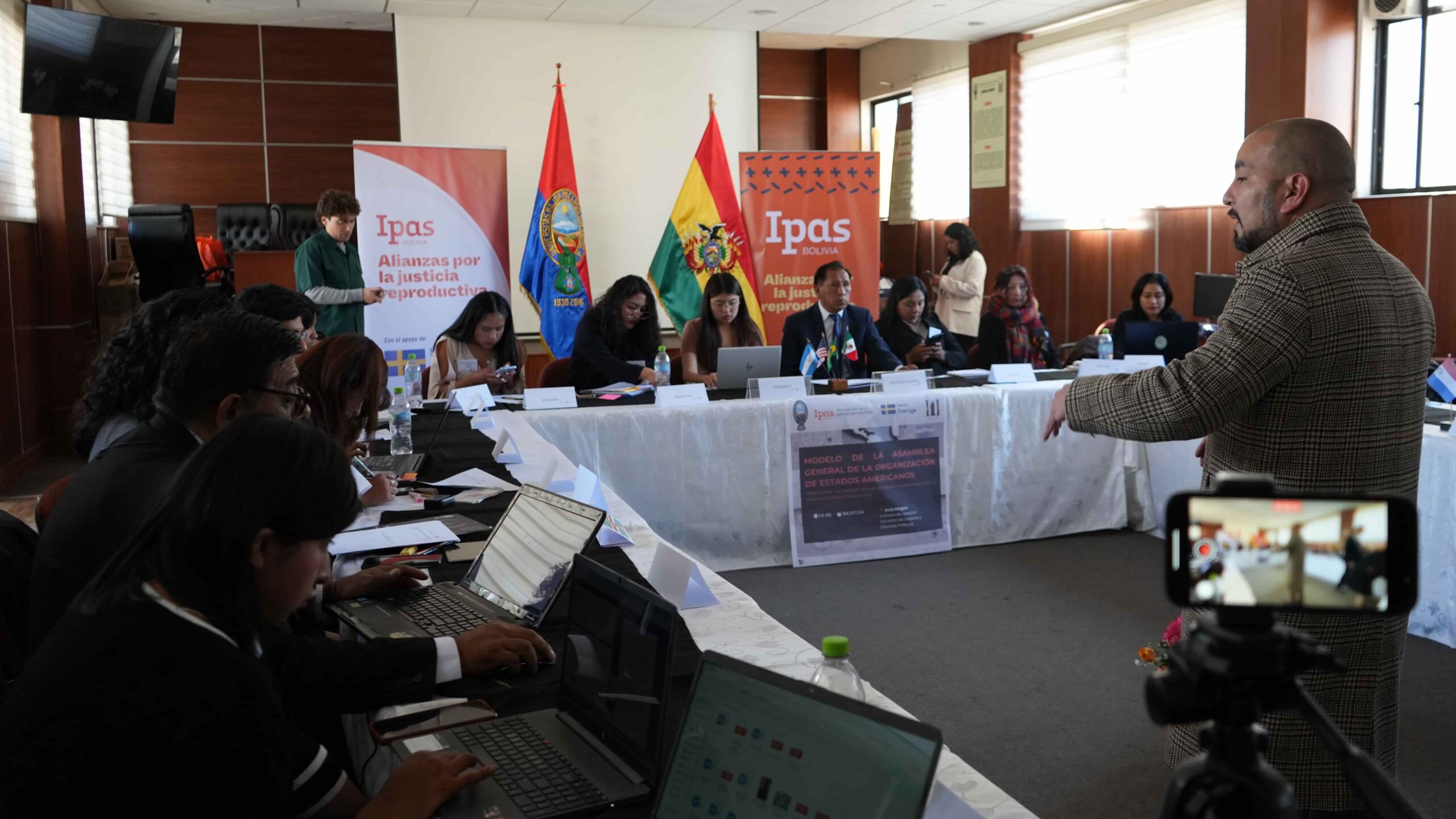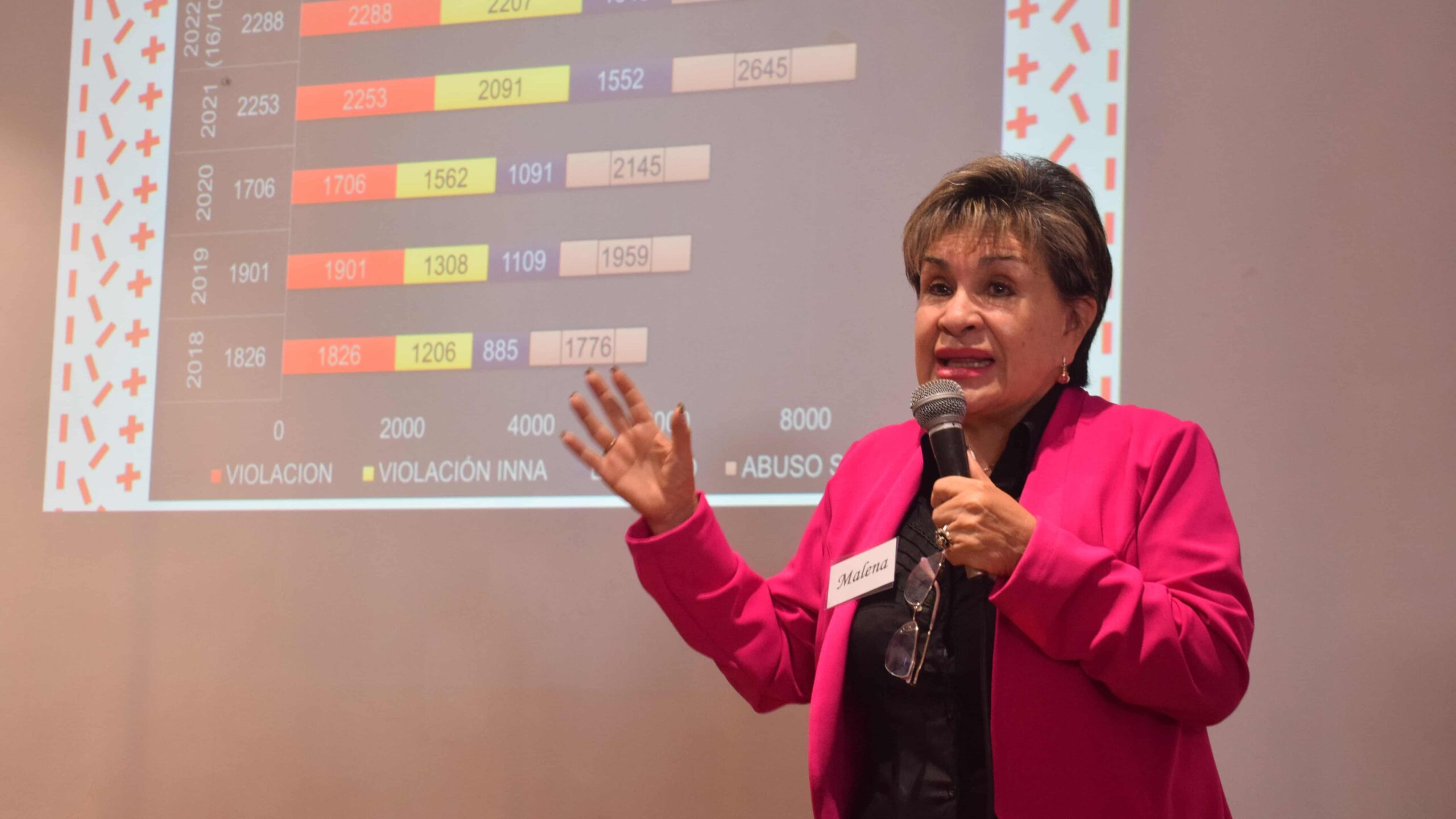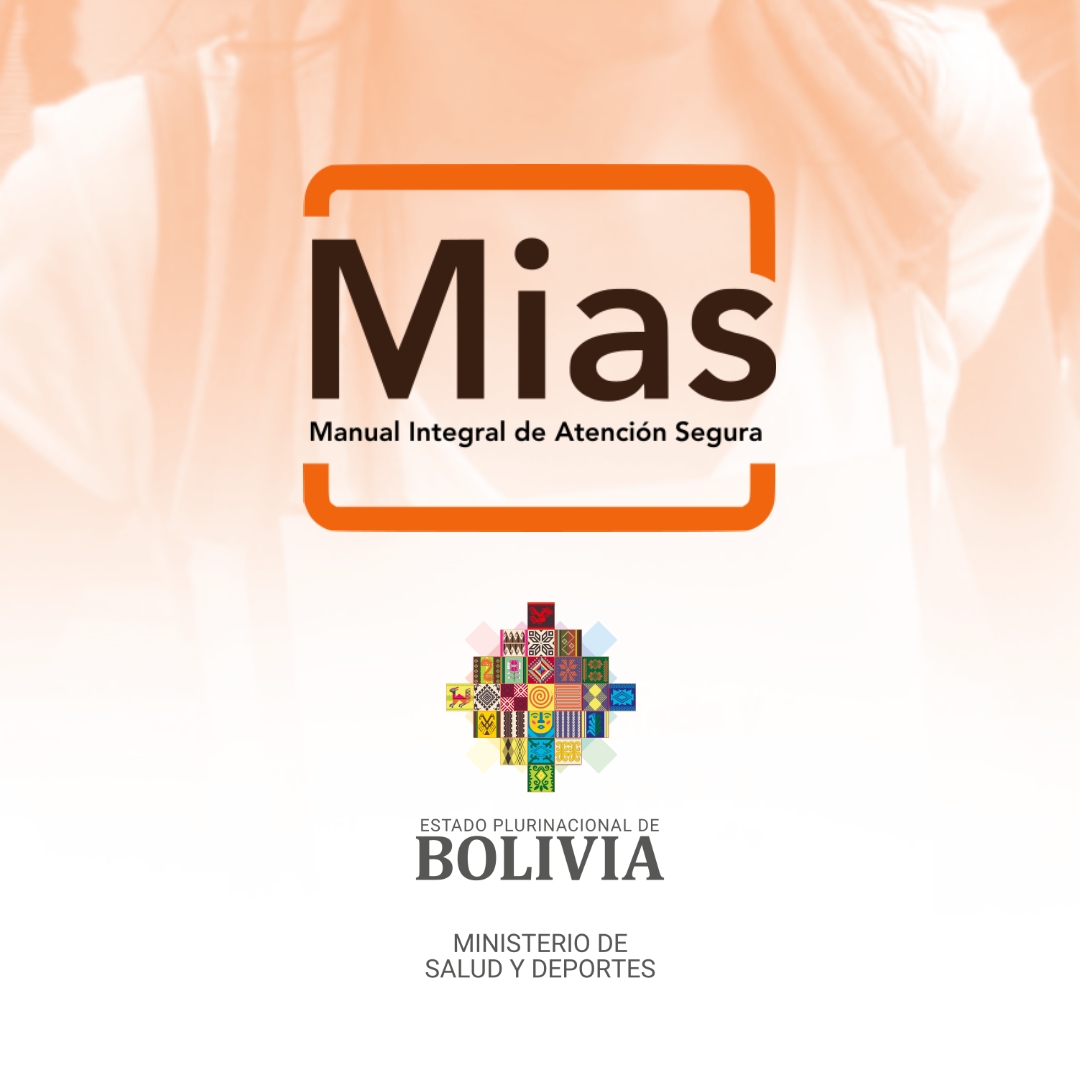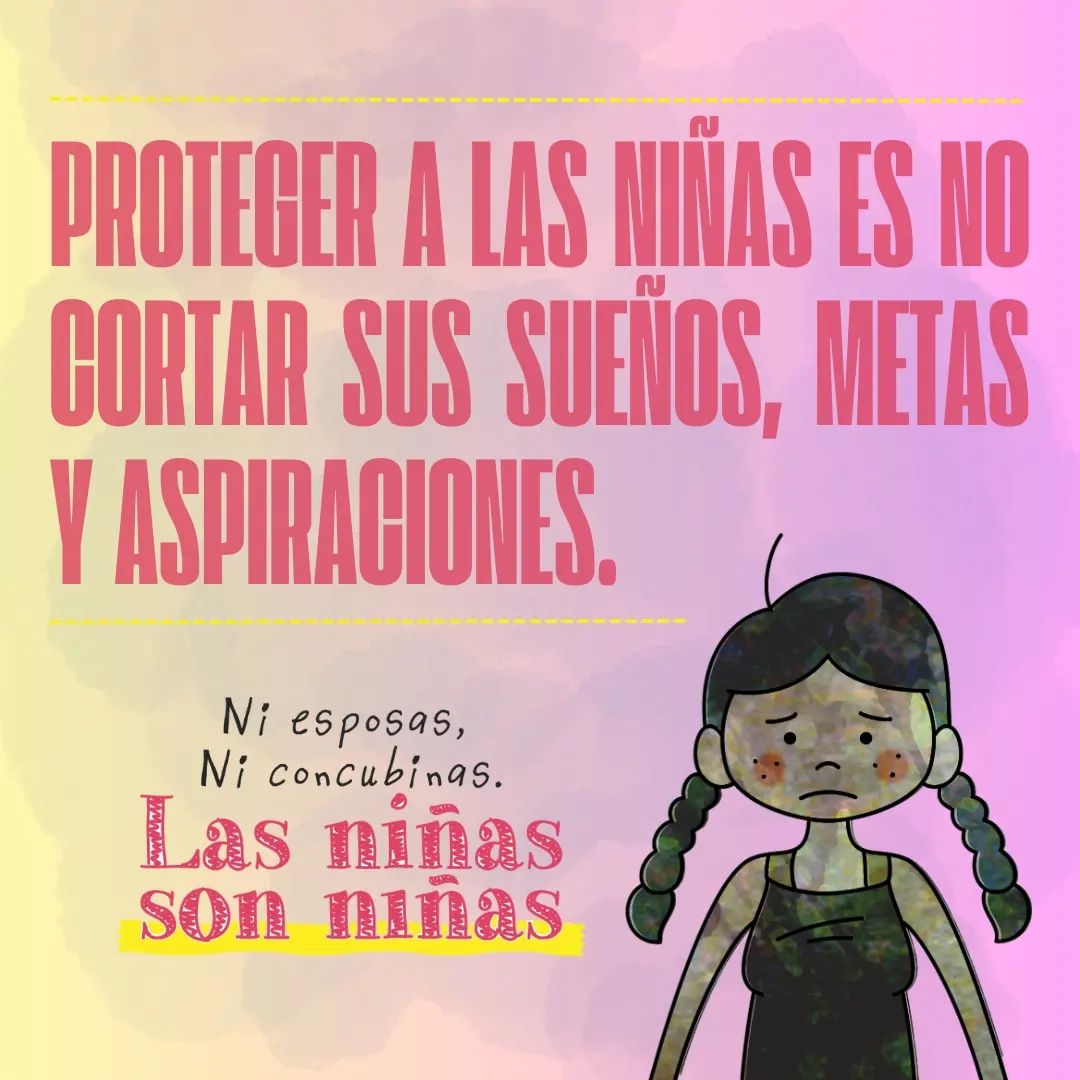By Mariela Cossío Mercado
Lía is 11 years old and was pregnant. It was not until 22 weeks of gestation that her mother discovered her condition, after seeking medical attention due to abdominal growth that seemed unusual to her. The girl had access to Legal Termination of Pregnancy (ILE), a procedure protected by law, but which still faces challenges in Bolivia, mainly because there is a lack of knowledge not only among the victims and their families, but also among health care providers and other sectors involved.
Lía is a pseudonym used in this report to protect the identity of the minor. At the Hospital Mexico in Sacaba, she is the fourth girl who has had an abortion so far this year. According to the director of the institution, Juan Carlos Balderrama, this hospital has treated a significant number of pregnant adolescents resulting from rape, peer relations or statutory rape.
In Bolivia, a woman, girl or adolescent may request an ILE, protected by Plurinational Constitutional Ruling 0206/2014, when the pregnancy represents a risk to life, physical, social or mental health or if it is the result of incest, statutory rape or rape.
Lía met all these conditions. After discovering the pregnancy, her mother went to the Childhood and Adolescence Ombudsman’s Office (DNA) in Sacaba, bringing with her an ultrasound scan that confirmed the gestational age. It was then that the girl managed to overcome her fears and break her silence, revealing that her 15-year-old cousin had sexually assaulted her on three occasions. Lía is currently receiving psychological therapy to support her recovery process.
On the other hand, the teenager involved, who comes from a dysfunctional family and has lost his father, is being held in preventive detention at the Cometa Social Reintegration Center. He had been living with his aunt and uncle, who are the victim’s parents, for almost three years. The young man worked with his uncle-in-law until about two months ago, when the case came to light.
Lía’s case is one of the few, compared to the rate of teenage pregnancy, in which Constitutional Ruling 0206/2014 has been applied. And, as if that were not enough, girls who seek an abortion face a series of moral prejudices. Others, out of fear, arrive at a hospital when their bodies can no longer hide the pregnancy and give birth.
Pamela, whose name has been changed to protect her identity, is 14 years old, three years older than Lía, but already the mother of a baby just over two months old. The teenager was the victim of an act of sexual violence perpetrated by her uncle-in-law in a community near the town of Cliza, Valle Alto de Cochabamba. The man deceitfully took her to pick escariotes (zucchini), where he sexually assaulted her and threatened her so that she would not talk. As a result of this abuse, the minor became pregnant.
The teenager finally revealed the name of her attacker, who was hiding in a town in the Tropic region. The police managed to capture him on August 1 in Ivirgarzama. Shortly afterwards, another complaint was filed against him: Pamela’s younger sister, 13 years old, was in her sixth month of pregnancy. She had also been a victim of the uncle-in-law.
Pamela was unaware that she had the option of whether or not to terminate her pregnancy. She lived in fear and under threat.
AVERAGE: ONE ILE EVERY 21 HOURS
Lía is one of the 13 girls, whose ages range from 10 to 14 years old, who have opted for a Legal Termination of Pregnancy (ILE) in Cochabamba, from January to July of this year.
Rossemary Grágeda, in charge of the Child, School and Adolescent Unit of the Departmental Health Service (SEDES), reported that 248 pregnancy terminations were performed on girls and adolescents (10 to 19 years old) during the first seven months of the year, equivalent to one abortion every 21 hours.
He broke down that 13 cases corresponded to girls between 10 and 14 years of age, while 235 cases involved adolescents between 15 and 19 years of age.
The 13 situations affecting girls between 10 and 14 years of age were reported in eight municipalities: three in Cercado, three in Quillacollo and two in Chimoré. The remaining cases were distributed in one each in Sacaba, Entre Ríos, Puerto Villarroel, Punata and Villa Tunari.
In terms of abortions performed on adolescents between 15 and 19 years of age, 68 were carried out in Cercado, 40 in Quillacollo, 26 in Puerto Villarroel, 16 in Villa Tunari, 15 in Punata, 14 in Sacaba, 11 in Vinto, 6 in Colcapirhua, 6 in Cliza, 5 in Colomi, 5 in Aiquile and 4 in Capinota. In addition, Arque, Ayopaya and Cocapata reported one case each.
According to Grágeda, the victims who underwent this procedure were no more than four months pregnant, i.e., none of them were more than 22 weeks pregnant.
Constitutional Ruling 0206/2014 decriminalizes the legal termination of pregnancy in Bolivia when the life or health of the woman is at risk or if she has been a victim of sexual violence, but it does not establish the gestational age limit for its performance. This situation has generated uncertainty and different interpretations. The Ombudsman’s Office considers that it is necessary for the Plurinational Legislative Assembly to legislate on the issue to determine the maximum term in these cases, through a Law on Sexual and Reproductive Rights.
In its report Situation of the legal termination of pregnancy as a human right of women in 2020, the Ombudsman’s Office asked 75 gynecologists about up to what week a legal termination of pregnancy can be medically performed or up to what week they have performed it. The answers varied, but 32% answered up to 22 weeks, 27% up to 20 weeks, 16% up to 12 weeks, 10% did not answer or did not know the information, 9% up to after 22 weeks, 3% up to 18 weeks and another 3% up to 8 weeks.
This means that the decision to terminate the pregnancy of a girl or adolescent victim of sexual violence who is more than 22 weeks pregnant rests with the health professionals. The testimony of an official of the Special Force to Combat Violence (FELCV), who preferred to keep her identity confidential, confirms that the doctors are the ones who make the “final decision”. “There are doctors who are reluctant to perform this procedure, especially when the pregnancy has advanced beyond 22 weeks. That is why the first thing we do when a victim arrives is to find out the gestational time. In some cases we seek help from organizations that promote the exercise of sexual and reproductive rights.”
Most physicians refuse to perform the procedure after 22 weeks, relying on the World Health Organization (WHO), which considers that “abortion is the termination of spontaneous or induced pregnancy before 22 weeks”.
In some medical centers, the position is inflexible. One example is the Germán Urquidi Maternity Hospital, where, according to its director Antonio Pardo, an abortion will not be performed if the pregnancy has advanced beyond 22 weeks. The doctor cited the case of a 12-year-old girl who arrived from Santiváñez at 29 weeks gestation. Despite the demand of the Ombudsman’s Office to terminate the pregnancy, the minor was transferred to another hospital, a second level hospital.
“We are talking about a seven-month pregnancy, so it could not be interrupted. The Ombudsman’s Office is pushing for the procedure to be performed without considering the gestational age, but the Children’s Ombudsman’s Office says we are committing homicide. Neither the Ministry of Health nor other authorities know what should be done. It is not clear. For our part, we are invoking the Technical Procedure for the Provision of Health Services in the framework of the Plurinational Constitutional Ruling 0206/2014,” she said, while showing the document and reading the abortion concept.
Pardo also recalled a criminal case from June 2022. The medical board decided not to terminate a 28-week pregnancy. The case involved a 12-year-old girl who had been raped by her step-grandmother in Chimoré. Although the Ombudsman’s Office requested the termination of the pregnancy, the DNA of Cochabamba advocated for “saving both lives”.
Days later, doctors were forced to perform an emergency cesarean section due to problems with the baby’s heart rate and a tangled umbilical cord around his neck. The preemie died four days later. This case sparked debates among activists, organizations, doctors and advocates, as well as a wrongful death investigation by the Public Prosecutor’s Office.
Pardo and Grágeda share the same position: abortion is not performed after 22 weeks of gestation. The former mentions “gaps” in the regulations and refers that it is supported by the Technical Procedure for the Provision of Health Services in the Framework of the Plurinational Constitutional Ruling 0206/2014. “According to the WHO, abortion is the loss of the product of gestation from the moment of implantation until reaching 500 grams or 22 weeks of gestation, calculated by the date of the last menstruation or by early ultrasound.”
In the same document, on abortion, it is stated that it is “the termination of pregnancy when it endangers the health or life of the woman, there is the existence of congenital malformations, lethal, is the result of rape, statutory rape or incest”.
The doctor states that they have only performed one abortion at the Germán Urquidi Maternity Hospital so far this year.
Constitutional Ruling 0206/2014 establishes that rape victims do not need judicial authorization for ILE, they only need to present a copy of the complaint made to the Police or the Prosecutor’s Office, together with informed consent. In cases where the woman’s life is at risk, a medical report and consent is sufficient.
Health personnel have the obligation to comply with the law within 24 hours of the request for the service, guaranteeing the confidentiality and privacy of patients. If a physician refuses to perform the procedure, he/she could face administrative and criminal penalties for breach of duties and functions.
According to Ipas Bolivia, with data from the Ministry of Health, 1,050 ILEs were performed in Bolivia in 2022, 78% of which corresponded to children under 15 years of age.
Health personnel are concerned about teenage pregnancy and ask for public policies to reduce the rates. Pardo acknowledged that there are many cases. He recalled the case of a 14-year-old girl who was admitted to the hospital in labor. The girl underwent a microcesarean section and the baby was placed in an adoption program.
Maternal mortality in Latin America and the Caribbean is one of the leading causes of death in adolescents aged 15-19 years. Adolescents under 15 years of age are up to three times more likely to die from pregnancy complications than women over 20. In addition, babies born to adolescent mothers have a higher prevalence of preterm birth and neonatal mortality.
FORCED MOTHERHOOD
In Cochabamba, the number of teenage pregnancies is alarming. In 2022, 5,747 pregnancies were registered in girls and adolescents between 10 and 19 years of age, which represents 13% of the total population in that age group, informed Rossemary Grágeda, head of the Child, School and Adolescent unit.
Most teenage pregnancies are concentrated in the Metropolitan region, with 2,929 cases. This is followed by the valleys, with 507; the Tropics, with 1,247; the Andean region, with 450; and the Southern Cone, with 614.
In 2022, an average of 15 to 16 teenage pregnancies were reported every day. Data from January to July of this year are still being processed, but the increase is estimated to be between 14 and 15%, according to Grágeda. This means that not even 8% of pregnant minors in Cochabamba have access to an abortion.
The director of the Germán Urquidi Materno Infantil, Antonio Pardo, reported that in 2022 they attended 81 pregnant adolescents up to the age of 18. However, as of mid-August 2023, there are already more than 126 cases, surpassing the previous year’s figure. Most of the patients are between 15 and 16 years old, but they have also treated 12-year-old girls with pregnancies resulting from rape. So far this year, at least seven cases of this type have been registered.
The Office for the Defense of Children and Adolescents (DNA) of the Mayor’s Office of Cochabamba also agrees that teenage pregnancy rates are high. The head of this agency, Cynthia Prado, says that almost every day a pregnant teenager arrives at the health centers of the municipality. The cases treated are due to rape and ignorance of contraceptive methods. For this reason, DNA is working on an action plan to reach out to adolescents.
5 YEARS: MORE THAN 39 THOUSAND GIRLS AND ADOLESCENTS PREGNANT
According to data from the National Health Information Service – Epidemiological Surveillance (SNIS-VE), socialized by Grágeda, 39,502 pregnancies in girls and adolescents between 10 and 19 years old were registered in Cochabamba in the last five years, from 2018 to 2022.
In 2021, 6,647 pregnancies were known, representing 15% of the total population in that age group. In 2020, there were 7,065 pregnancies (15%), in 2019, 9,217 (16%) and in 2018, 10,826 (18%).
Although statistical data show a slight decrease, there is evidence of underreporting of adolescent pregnancy. For example, there are cases of pregnant girls and adolescents who do not have access to medical care or who undergo clandestine abortions.
In Bolivia, clandestine abortion is one of the main causes of maternal death. However, there are no official data.
PROFOUND CONSEQUENCES
Adolescent pregnancy or childbearing can jeopardize health, education, job opportunities and the future.
According to a study by the United Nations Population Fund (UNFPA), teenage mothers (women who had a child between the ages of 10 and 19) earn up to 28% less than young adult mothers (women who had a child between the ages of 20 and 29).
Adolescent pregnancy affects the life plans of young mothers, as some abandon their studies and goals, and has a significant impact on social inequalities.
In response to this problem, the Bolivian Ministry of Health has Comprehensive Adolescent Care Centers (AIDA) in public health facilities. According to Grágeda, there are 10 centers in Cercado, two in Sacaba and one in Vinto. There are plans to implement these centers in the Southern Cone and valleys.
Bolivia has one of the highest teenage pregnancy rates in Latin America. This represents a public health problem and a violation of the rights of girls and adolescents. In response to this situation, several collectives and movements have taken to the streets with the slogan “Girls, Not Mothers”, alluding to the fact that minors should not be forced into motherhood.
It is no secret that cases of sexual violence have also increased, resulting in pregnancies.
According to statistics from the Public Prosecutor’s Office, updated to July 31 of this year, 1,478 cases have been registered as rape of an infant, child or adolescent. Of these, 469 were reported in Santa Cruz, 275 in Cochabamba, 271 in La Paz, 139 in Beni, 101 in Chuquisaca, 85 in Potosí, 77 in Tarija, 34 in Oruro and 27 in Pando. At least 80% of the sexual aggressions come from family members or people close to the victims.
These are denounced cases, since behind them there are “black figures” that do not come to light.
FULL NOTE IN OPINION

